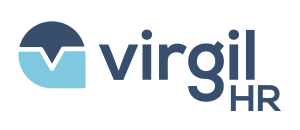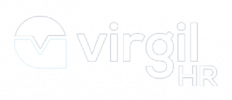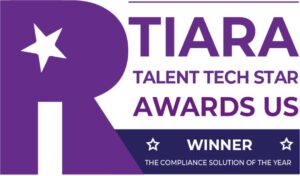In a day and age where technology touches upon nearly every aspect of an employee’s personal and professional life, HR professionals need to ensure they have the tools necessary to maximize employee productivity, performance, and satisfaction.
HR technology has so many benefits for today’s organizations, including the following:
- Becoming a key factor in automating and streamlining tasks and processes, making professionals more efficient
- Ensuring HR leaders have more time for strategic endeavors
- Reducing compliance exposure, saving money on fines and penalties
- Helping HR leaders make data-driven decisions that lead to more effective talent acquisition and management and a reduction in turnover
- Offering self-service options to employees
It should come as no surprise, then, that according to research and consulting giant Gartner, nearly half of HR leaders plan to increase their software budgets in 2024. Nevertheless, despite HR software’s many benefits, many of the sector’s leaders still need to make a business case for it in order to secure the budget that is required.
As an HR leader who understands the value of the right technology stack, read on to discover the keys to building a value proposition, getting buy-in from the CFO and finance team, and ensuring maximum ROI from the software you want.
Building a Value Proposition for Your Investment
Your company leaders set the direction and goals of the business and create a budget that will move the organization toward the goals. To get them to see the value in HR software, you should first define the specific business needs the software will address. For example, perhaps reducing turnover is one of your organization’s key objectives for the year. You’ve identified that your team needs to upgrade its HR information system (HRIS) or offer a complimentary employee engagement software to include employee satisfaction features that will address high turnover rates.
Once you’ve connected a broader company objective to an HR strategic initiative, you’ll want to vet different solutions and consider price, functionality, UI/UX, and likelihood for adoption. You’ll ascertain whether the chosen software will, in fact, provide those employee satisfaction features to address high turnover. As part of your use case, you’ll want to include key features, differentiators from other competitors (and why this solution is the right fit for your organization), price, contract terms, and a change management plan.
Finally, your value proposition needs to emphasize the advantages of the software you want to purchase. You should be able to comfortably state the tangible benefits your chosen software will bring, and you’ll want to provide quantitative support of how this software will decrease turnover and save cost to the business. This solution isn’t just to support “back office, overhead initiatives”; it serves to support a company objective and save money.
The Basics of ROI for Your Proposed Software Solution
Getting the software budget you need means creating a clear pathway between the software’s functionality and the business’s bottom line. To accomplish such a goal, start by estimating what the HR function will save from reduced manual work and errors. Ask yourself questions pertaining to quantifying how automation will boost HR’s productivity. For example:
- Will the software allow you to automate time tracking, thereby reducing costly overtime and curbing absenteeism?
- Will your chosen platform help you improve the employee experience to reduce turnover and, if so, what are the cost savings involved?
Quantify the cost of the overtime hours or turnover and the value of that increased productivity. Then, use the following formula to calculate ROI: (Net Profit or Benefit / Cost of Investment) x 100.
Also, don’t forget to highlight the financial benefits that will come with time, such as software scalability. Benefits like these can save the company money on future investments, which can extend the value of your software purchase even further.
Providing Evidence to the Finance Team
To satisfy your finance team’s need for evidence of ROI, include industry data and case studies to show how the software has brought a tangible return to similar businesses and how investing in the application will ensure your organization stays ahead of the curve. Peer benchmarking data will help increase their confidence in the investment.
You can also perform a cost-benefit analysis, which involves summarizing the potential rewards and subtracting the associated costs to further quantify the true investment cost. Additionally, you should help the finance team see how automated software helps to reduce the company’s compliance risk. Such a benefit also brings with it cost savings by decreasing the possibility of fines and safeguarding the organization’s reputation.
How to Win Over Your CFO
Ultimately, the CFO will typically give final approval for the HR software investment. You can win them over by tailoring your pitch to align with their current business focus on cost control. Using financial terms like ROI, payback period, and net present value can help you make your case by showing the CFO you can speak their language and that you’re on the same page as far as financial concerns.
Just make sure that you involve the CFO early on in the planning process, as they’ll be able to address any initial concerns, and you’ll be able to build C-suite support for your proposition. And speaking of C-suite support, tie in the CEO and any relevant C-levels to your initiative to get buy-in across the board. Their influence will help you leverage your case to the CFO.
Getting Buy-In for HR Software Means Showcasing the Potential Returns
Though you may understand the business value of HR software, acquiring the budget you need for your investment means making that value clear to your organization’s leadership team. Being able to quantify how a piece of software affects the business’s bottom line will always help you move the needle.
If you’re considering software solutions to increase productivity and decrease compliance risk, VirgilHR can help. Our all-in-one solution enables you to stay up to date with employment and labor laws, thereby reducing the possibility of costly fines, lawsuits, and the need to hire outside legal counsel. Schedule a demo today to see how VirgilHR can help you save money now and in the long run.






